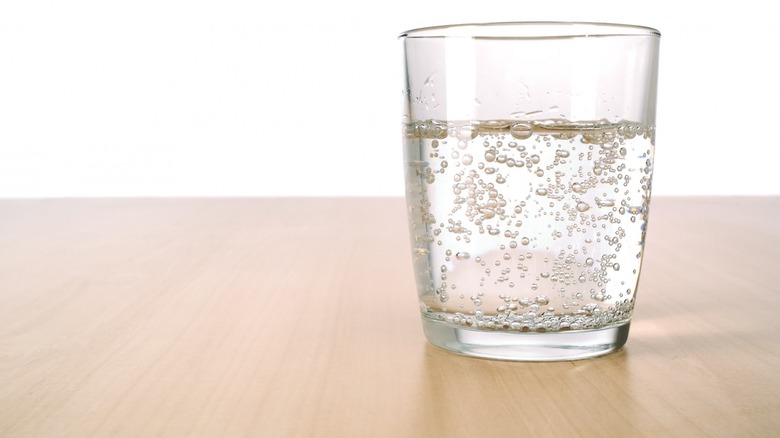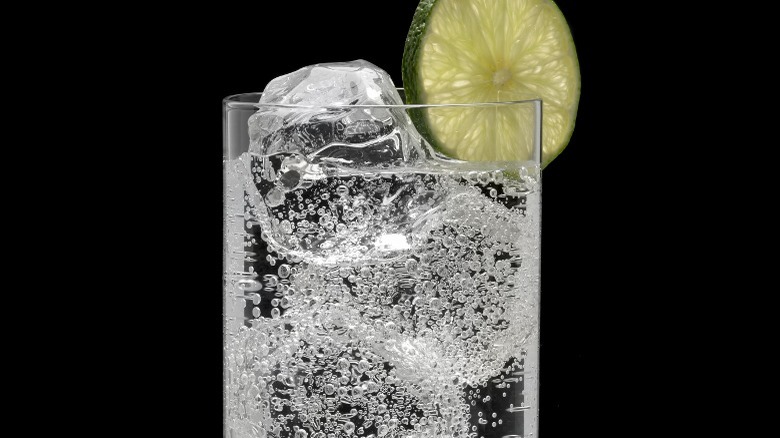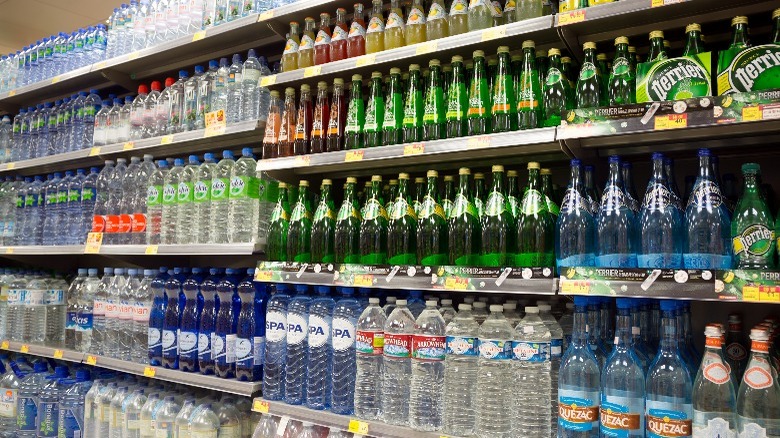When To Drink Seltzer Vs. Club Soda Vs. Sparkling Water
Adding carbonation to plain water is like tricking out a car for maximum leisure and performance, gaining all the benefits of the original all while enjoying some bonus advantages. All bubbly water isn't made the same, however. Seltzer, club soda, and sparkling water are three slightly different carbonated variations, and they all have their time and place in the kitchen, bar, and dining table.
Seltzer is the most basic form of carbonated water, merely regular H20 with externally added carbon dioxide to create bubbles. Club soda is almost the same thing but with additional alkaline minerals added for taste. This usually makes the bubbles feel a bit smoother going down because the electrolytes counteract carbonic acid, which forms when carbon dioxide is added to water. Sparkling water has similar minerals as club soda but they occur naturally through springs found in the wild, which is why you'll often see bottles labeled as "mineral water," as well. The carbonation here is also the result of sparkling water's natural habitat, as underground rock chambers release carbon dioxide into the spring, usually due to the sort of heat found in volcanic environments.
When to use each type
The plainness of seltzer water means that you won't get all the benefits and tastes that mineral water can provide, but that lack of additional elements means that seltzer is also a bubbly blank slate of possibilities. This is why it's common to see flavored seltzer since there are no additional tastes getting in the way. It's also why alcoholic seltzer is all the rage nowadays, and why cans are labeled "hard seltzer" and not "hard club soda."
This means that seltzer is also a suitable mixture for cocktails, although club soda may be an even better option depending on the exact mineral blend inside the beverage. Too much alkaline and the water can taste overly salty or metallic, but just enough can even out the texture of your drink and have your blend feeling silky smooth. Some brands of club soda like Fever-Tree deliberately mix their minerals for optimum use as a mixer. It's probably best to leave the delicate, natural flavor of sparkling water on its own, though, as you can savor the often more expensive bottles with each sip.
Brands and benefits
The diversity of carbonated water only expands with the sheer proliferation of brands available on supermarket shelves. For instance, the ubiquitous French sparkling water Perrier is known for its high level of carbonation, while its Italian counterpart San Pellegrino is better for those looking for a less intense onslaught of bubbles (both brands, by the way, add carbon dioxide after they already source their mineral water). There's also the classic method of carbonating water using a soda siphon, although this, of course, creates what would be classified as seltzer water since there are no additional minerals added. For a more modern way of making homemade seltzer, machines like SodaStreams are available on the market to control levels of carbonation.
It's worth it to mention that carbonated water, in any of its forms, is no less hydrating than still H20. In addition, the bubbles can aid in indigestion and constipation, while also providing a way to scratch that soda-drinking itch. The minerals found in club soda and sparkling water can, in fact, hydrate you more, since a bulk of them are electrolytes like calcium, magnesium, and potassium that help your body absorb and process water more effectively. Carbonation can make you feel bloated, so it's best not to drink bubbly water right after a workout, but keeping a glass or bottle by your side during the day is a fun way to mix up your hydration habit.



